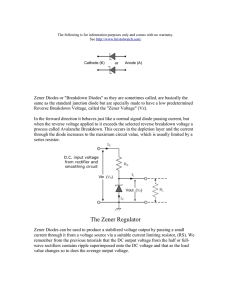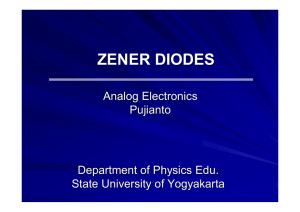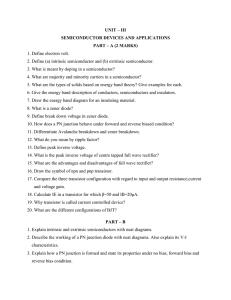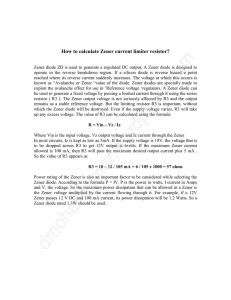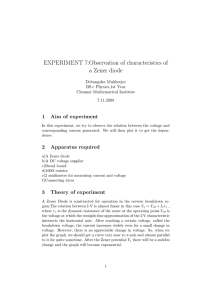How to make a Zener Regulated power supply
advertisement
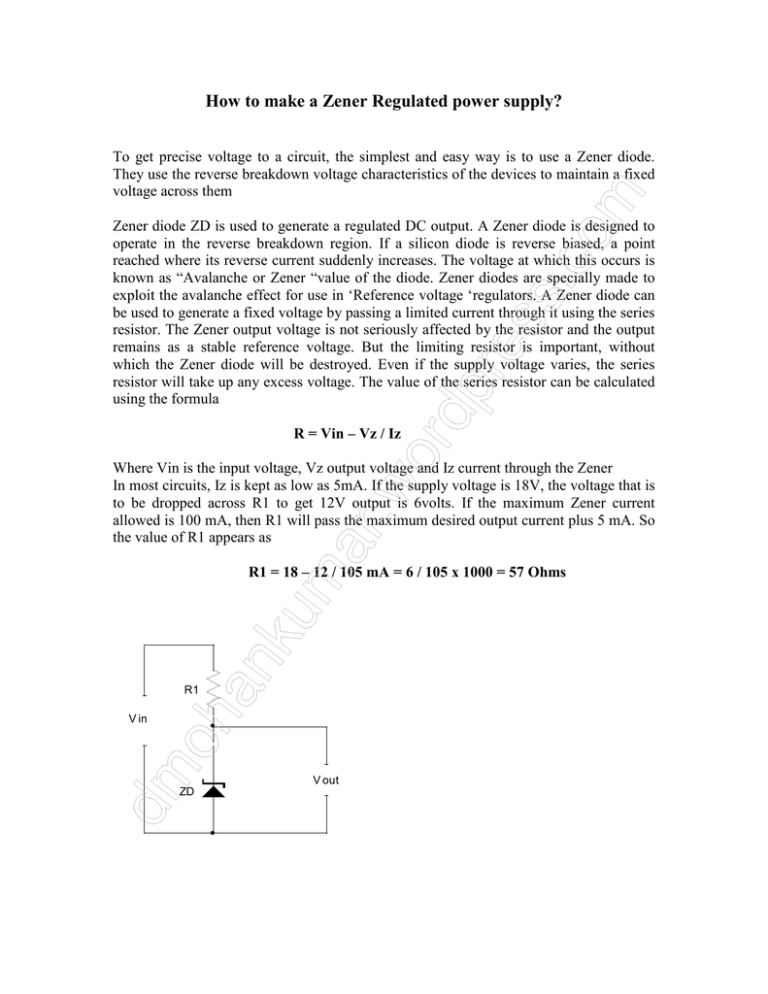
How to make a Zener Regulated power supply? To get precise voltage to a circuit, the simplest and easy way is to use a Zener diode. They use the reverse breakdown voltage characteristics of the devices to maintain a fixed voltage across them Zener diode ZD is used to generate a regulated DC output. A Zener diode is designed to operate in the reverse breakdown region. If a silicon diode is reverse biased, a point reached where its reverse current suddenly increases. The voltage at which this occurs is known as “Avalanche or Zener “value of the diode. Zener diodes are specially made to exploit the avalanche effect for use in ‘Reference voltage ‘regulators. A Zener diode can be used to generate a fixed voltage by passing a limited current through it using the series resistor. The Zener output voltage is not seriously affected by the resistor and the output remains as a stable reference voltage. But the limiting resistor is important, without which the Zener diode will be destroyed. Even if the supply voltage varies, the series resistor will take up any excess voltage. The value of the series resistor can be calculated using the formula R = Vin – Vz / Iz Where Vin is the input voltage, Vz output voltage and Iz current through the Zener In most circuits, Iz is kept as low as 5mA. If the supply voltage is 18V, the voltage that is to be dropped across R1 to get 12V output is 6volts. If the maximum Zener current allowed is 100 mA, then R1 will pass the maximum desired output current plus 5 mA. So the value of R1 appears as R1 = 18 – 12 / 105 mA = 6 / 105 x 1000 = 57 Ohms R1 V in V out ZD Power dissipation Power rating of the Zener is also an important factor to be considered while selecting the Zener diode. According to the formula P = IV. P is the power in watts, I current in Amps and V, the voltage. So the maximum power dissipation that can be allowed in a Zener is the Zener voltage multiplied by the current flowing through it. For example, if a 12V Zener passes 12 V DC and 100 mA current, its power dissipation will be 1.2 Watts. So a Zener diode rated 1.3W should be used. As a rule of thumb, a minimum of 10% of the total current should flow the Zener leaving the rest available to the load. By increasing the value of the series resistor, it is easy to reduce the current flowing through the zener but allow a minimum of 5 to 10 mA current through the zener. Then only it will reach the avalanche state to give output voltage. The diagram below shows a variable resistor as the series resistor to fix the Zener voltage and current to get the accurate breakdown voltage for the Zener + Vs VR 5K ZD 3.3 V 1W + Vout - Variable Resistor as Series resistor for Zener Resistance can be adjusted up to 5K You can use a variable resistor so that accurate breakdown voltage can be obtained. But use a dummy load to fix the output voltage as desired. Adjust VR1 till the Vout is reaching the required output voltage.
